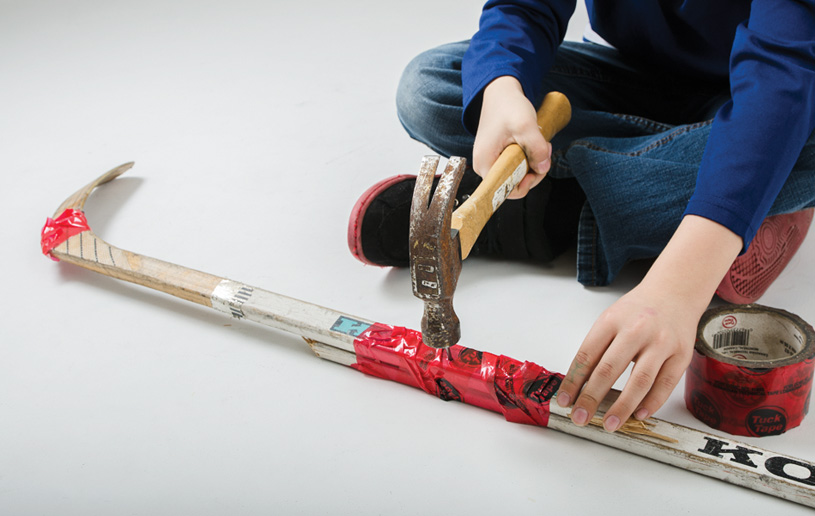
One major key to our 30 plus-year marriage is that my bride Ramona has been blessed with startlingly low expectations.
Today she was ecstatic when I unclogged a drain, which may give you some indication of how unhandy I am to have around. I once oiled a squeaky door for her after watching a YouTube instructional video. She was so pleased she almost wept. Low expectations are such a blessing!
But things aren’t always happy in Phil-and-Ramona-ville. Sometimes it irritates me that my wife chucks stuff—just heaves it out. Today I caught her sneaking two bags of my personal belongings into the trunk of the car, which she then pointed toward the thrift store. This was perfectly good stuff:
- Cassette tapes
- A beautiful watch, which no longer ticks but has very nice golf club hands
- Trousers that fit me nicely. Back in ninth grade
At this rate, we’ll never be on that Hoarders show.
I grew up in the 1960s, the golden age of fixing stuff. If you were fortunate to get a Christmas gift at all, chances are it was handmade. Each Christmas Eve my parents gathered us about the coal-burning stove there in our two-room cabin and said, “Children, the cotton crop wasn’t what we were hoping for with the late snows and the tornadoes took the sheep. So here, why don’t you share this orange?” I was the smart one in the family so I would say, “Why did we plant cotton again this year? We live in Canada. The only thing that grows here are blisters. And wool.”
I’m exaggerating a bit, but I did grow up below the poverty line. We didn’t need a fence beneath the Christmas tree to keep presents from falling out.
And when you received something, you kept it. If it was broke you fixed it. Mom re-used aluminum foil and tea bags sometimes. Once she helped me nail together a broken hockey stick—it was one of the few things that didn’t take. She waxed floors, hemmed pants, and made her own cards. Dad never dreamed of anyone else changing the oil in our car, or of buying shoes when he could hobble over to the shoe repair shop. He showed me how to repair bicycle inner tubes, what a carburetor was for, and where to buy string and glue.
It’s funny looking back. I thought everyone was as poor as we were, which would have made everyone astoundingly rich. You see, we had a garden. Hand-me-down bicycles. A pond for catching frogs. We grew our own food, crafted our own Christmas ornaments, made our own candles and sold them door-to-door sometimes. We even made our own tie-dyed shirts one summer. We were so cool we didn’t even need air conditioning.
Throwing things out meant there was more where that came from and there wasn’t. We lived that close to the edge. I suppose growing up in an age of fixing up showed me that you can refurbish more than radios and lawnmowers and fridges and children’s toys. You can fix friendships. You can mend a marriage.
A reporter once asked a couple how they had managed to stay married 65 years. The woman replied, “We were born in a time when if something was broken, we would fix it, not throw it away.”
Surely one of the greatest keys to the joy-filled life is following through on what we know to be right, having the humility to work on things when the world says, “Chuck it and run.”
All these memories swirling have made me a little nostalgic and there’s something I need to say about that. The good old days weren’t all good. In fact, in Ecclesiastes 7:10 the teacher warns us not to ask “‘Why were the old days better than these?’ For it is not wise to ask such questions,” (NIV). A better question is this: What does God require of me today? Micah 6:8 gives the answer, that we act justly, love mercy, and walk humbly with Him.
Certainly this includes binding up the broken, fixing friendships and mending marriages. It includes making memories for future generations to smile about. I suppose I should start by thanking Ramona for knowing what to throw out and what to keep. I’m glad she hung onto me, even if she’s about to throw out a tie-dyed T-shirt that was best before 1973.

